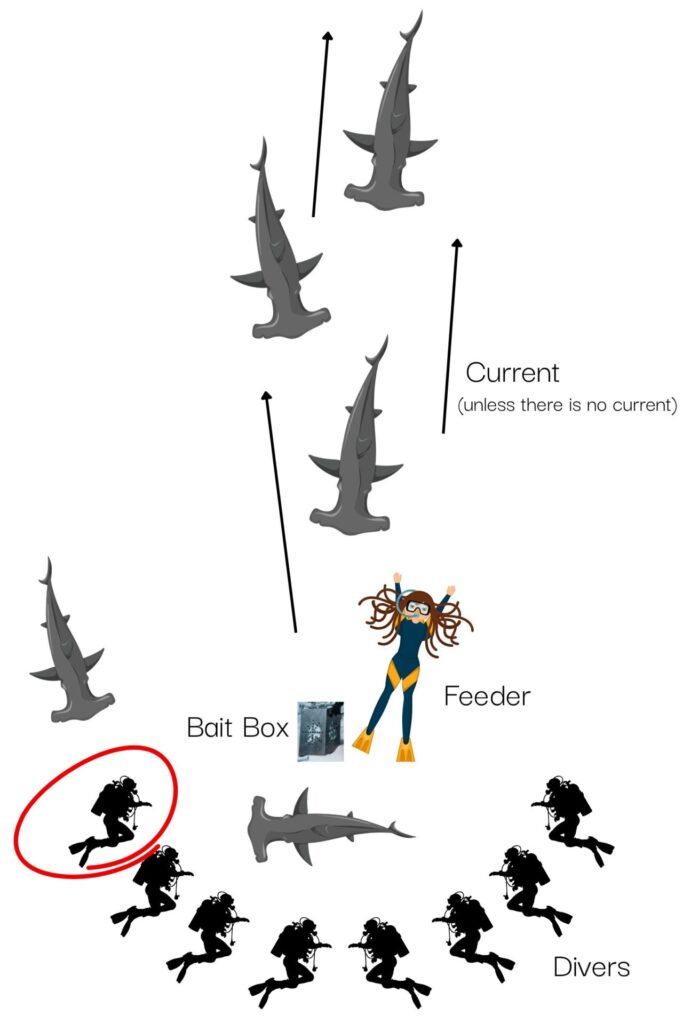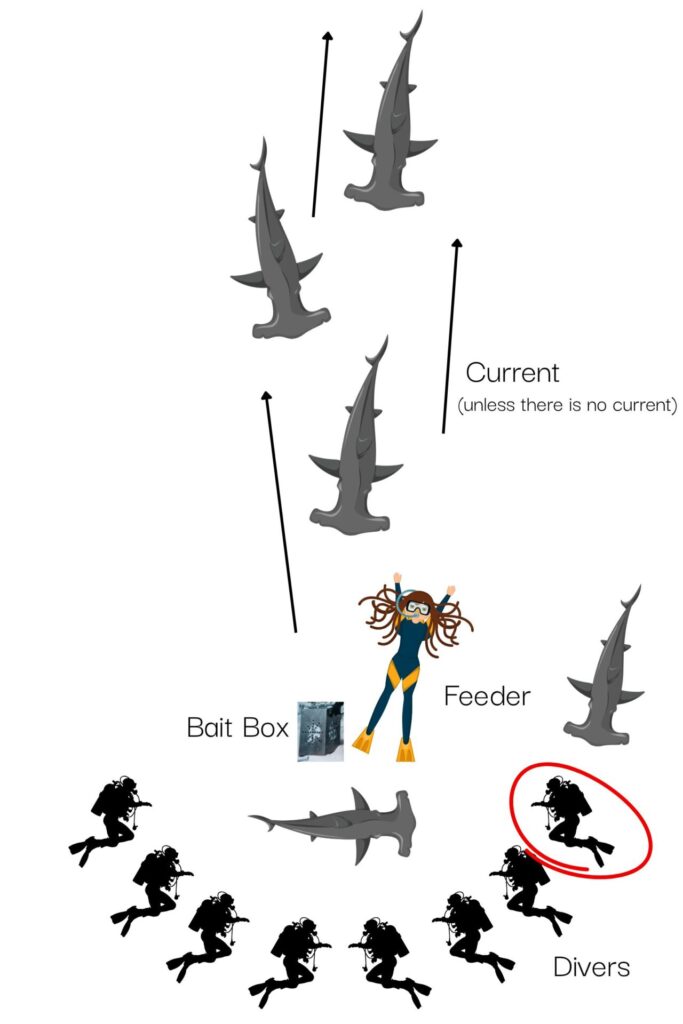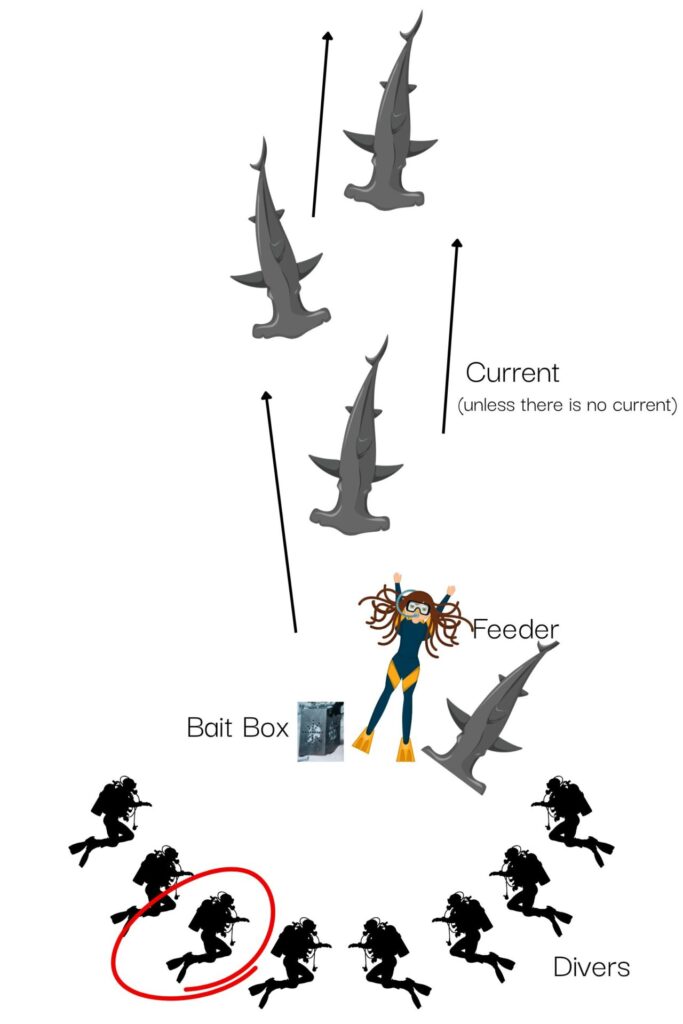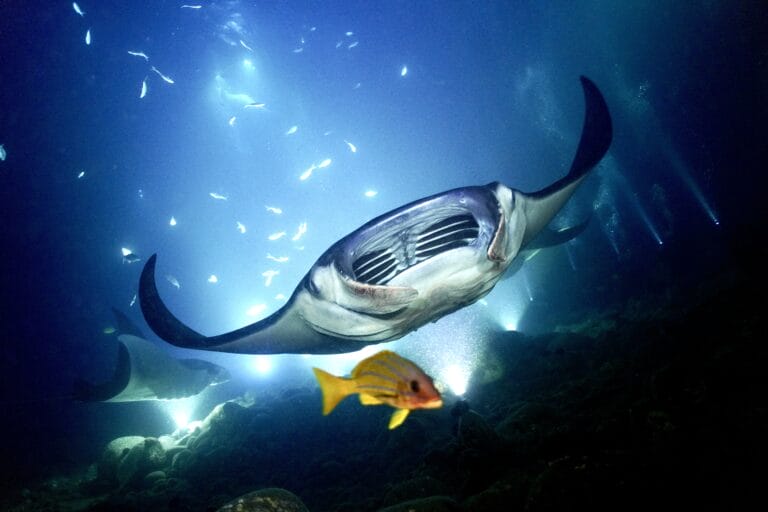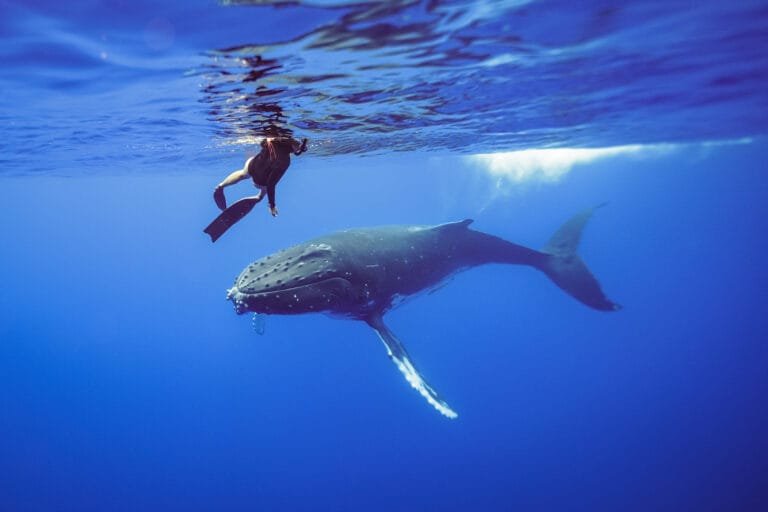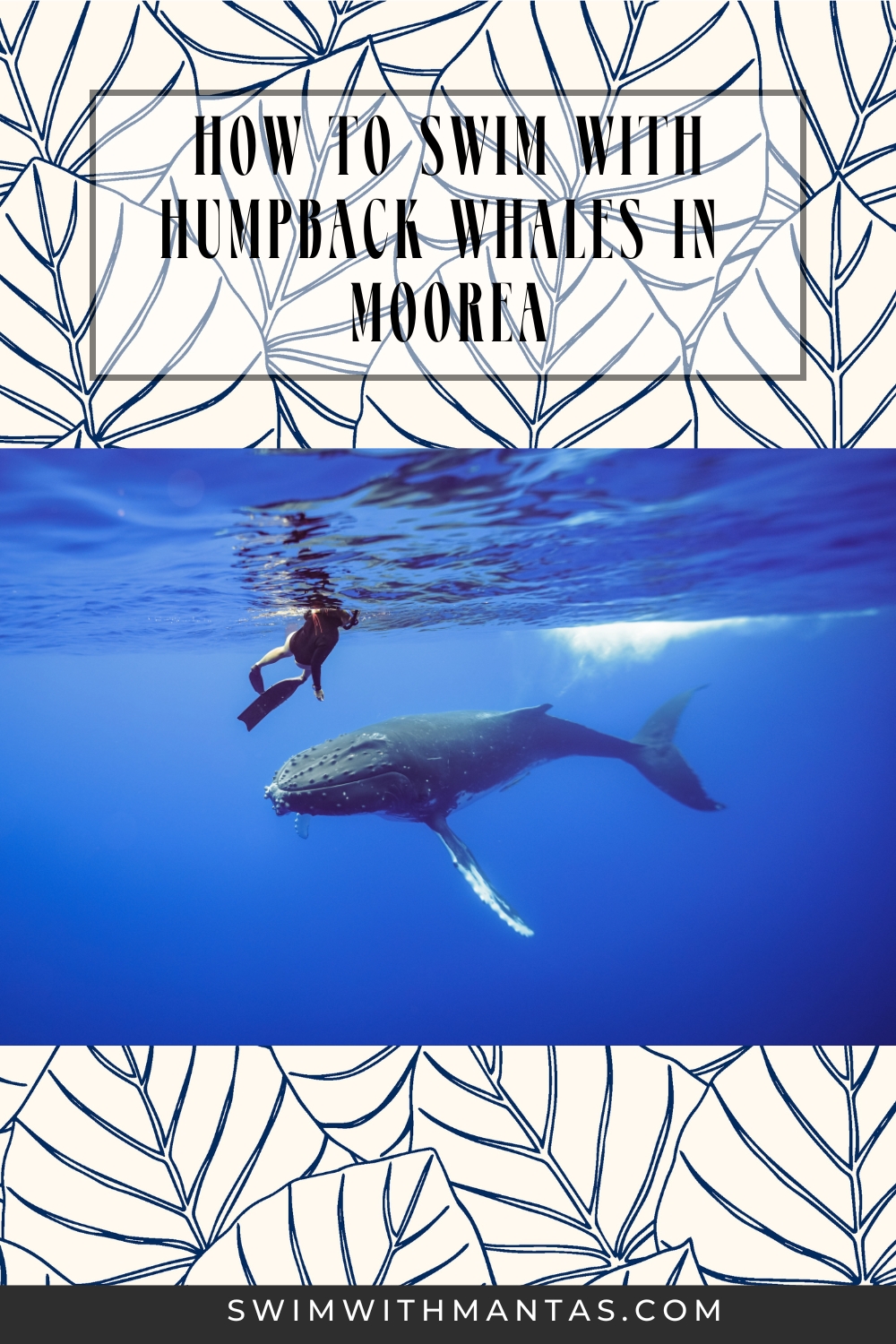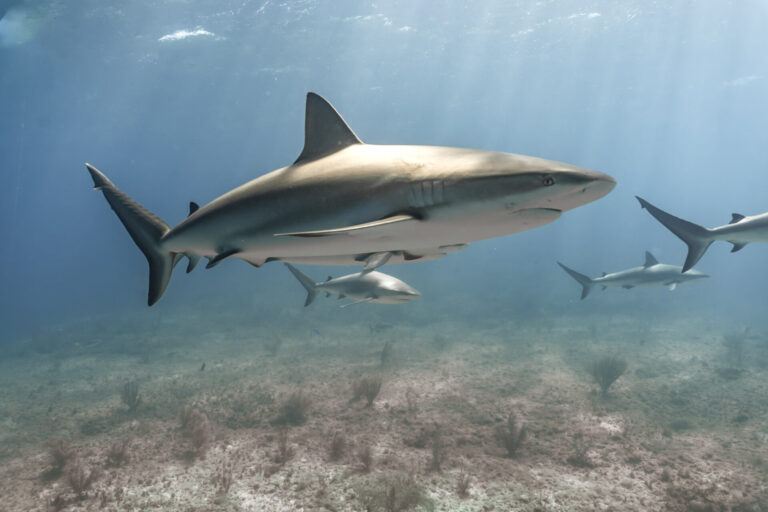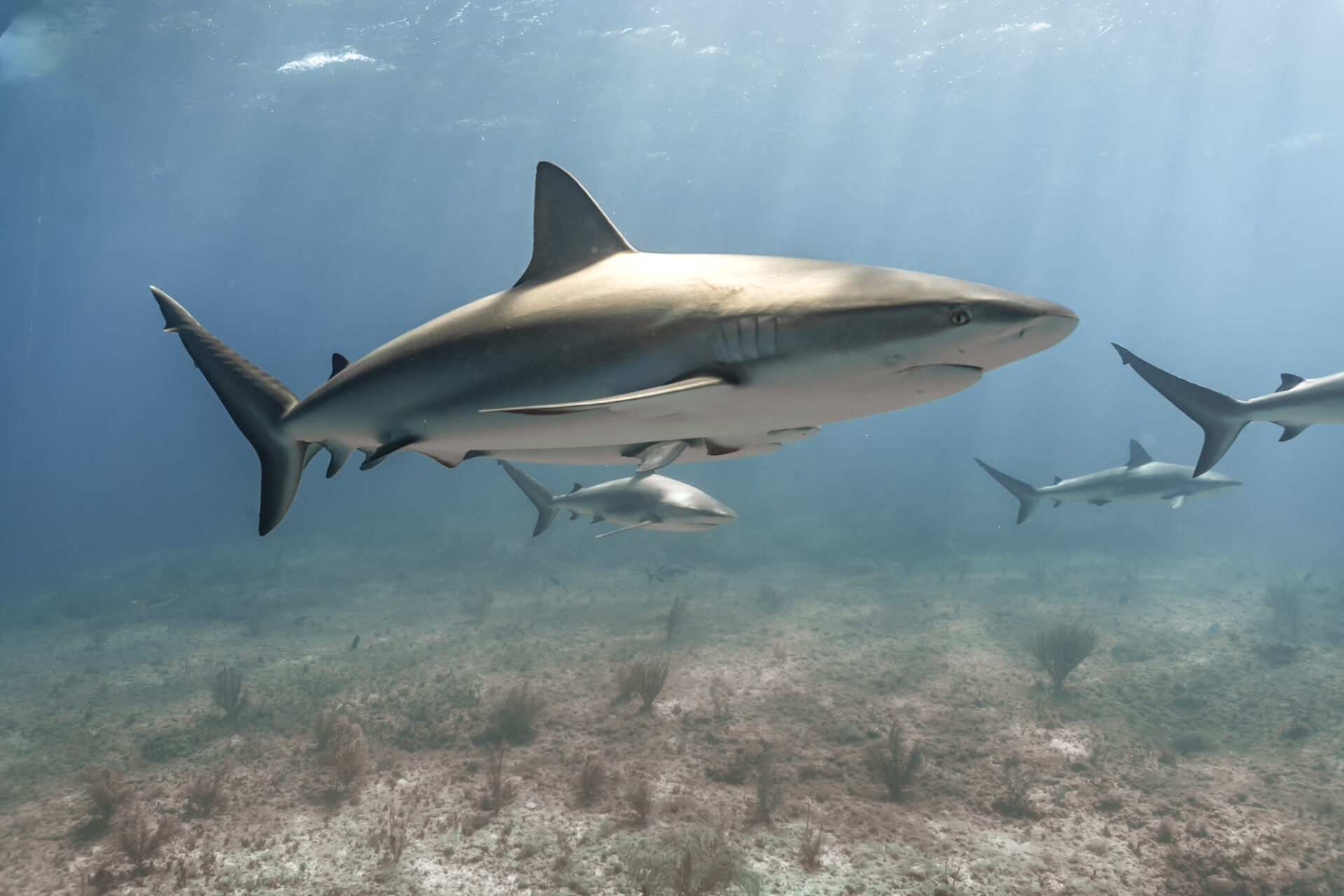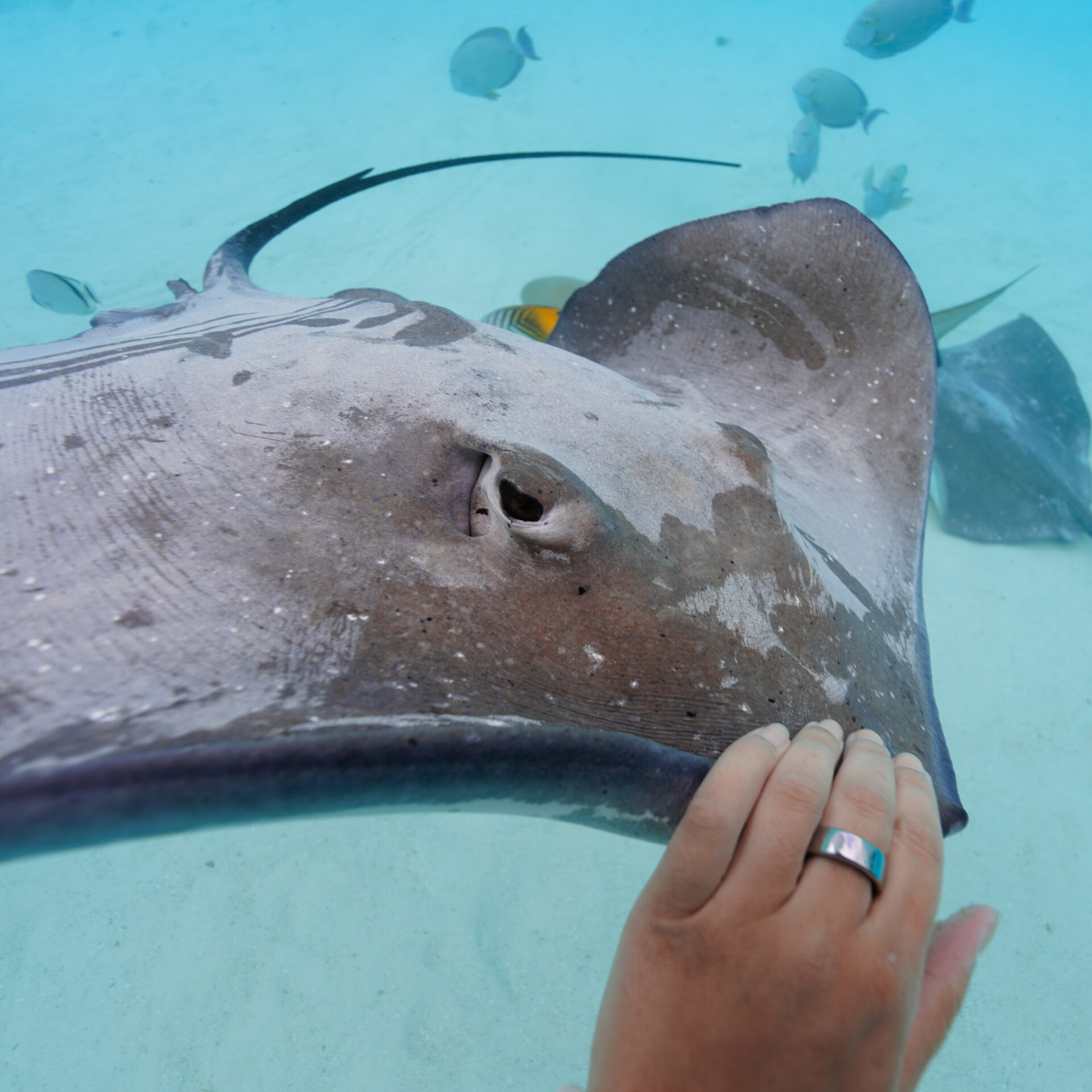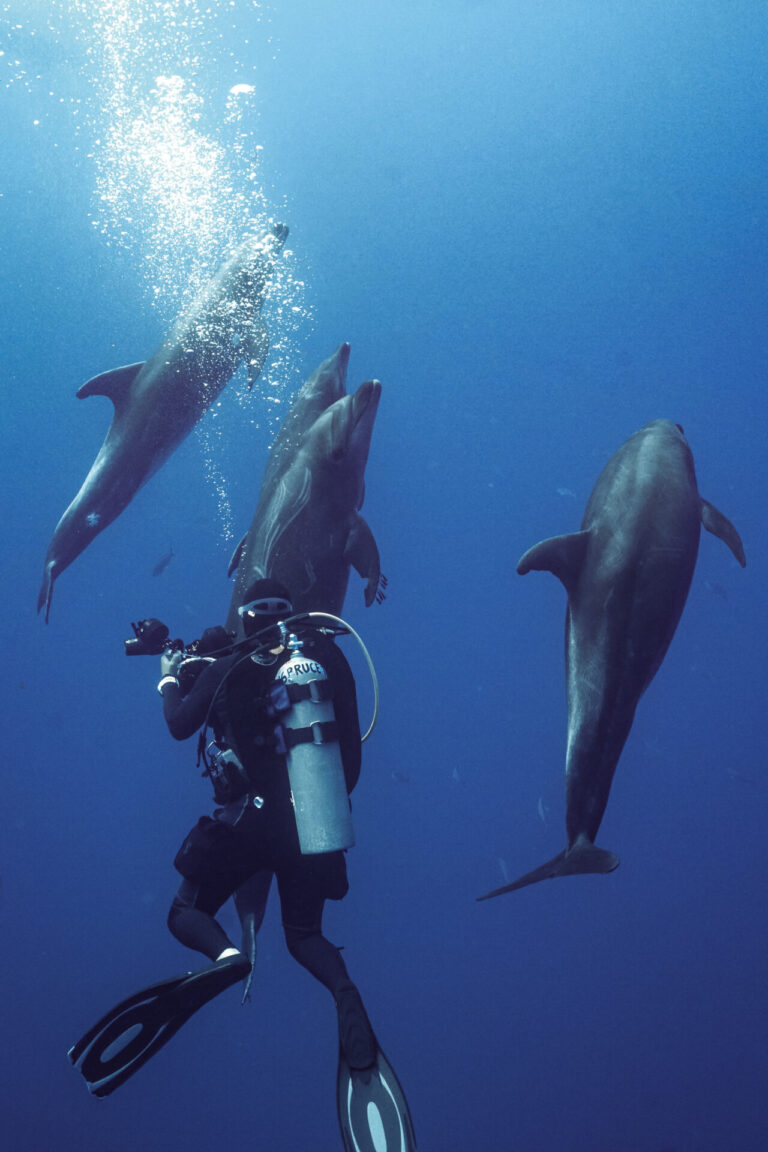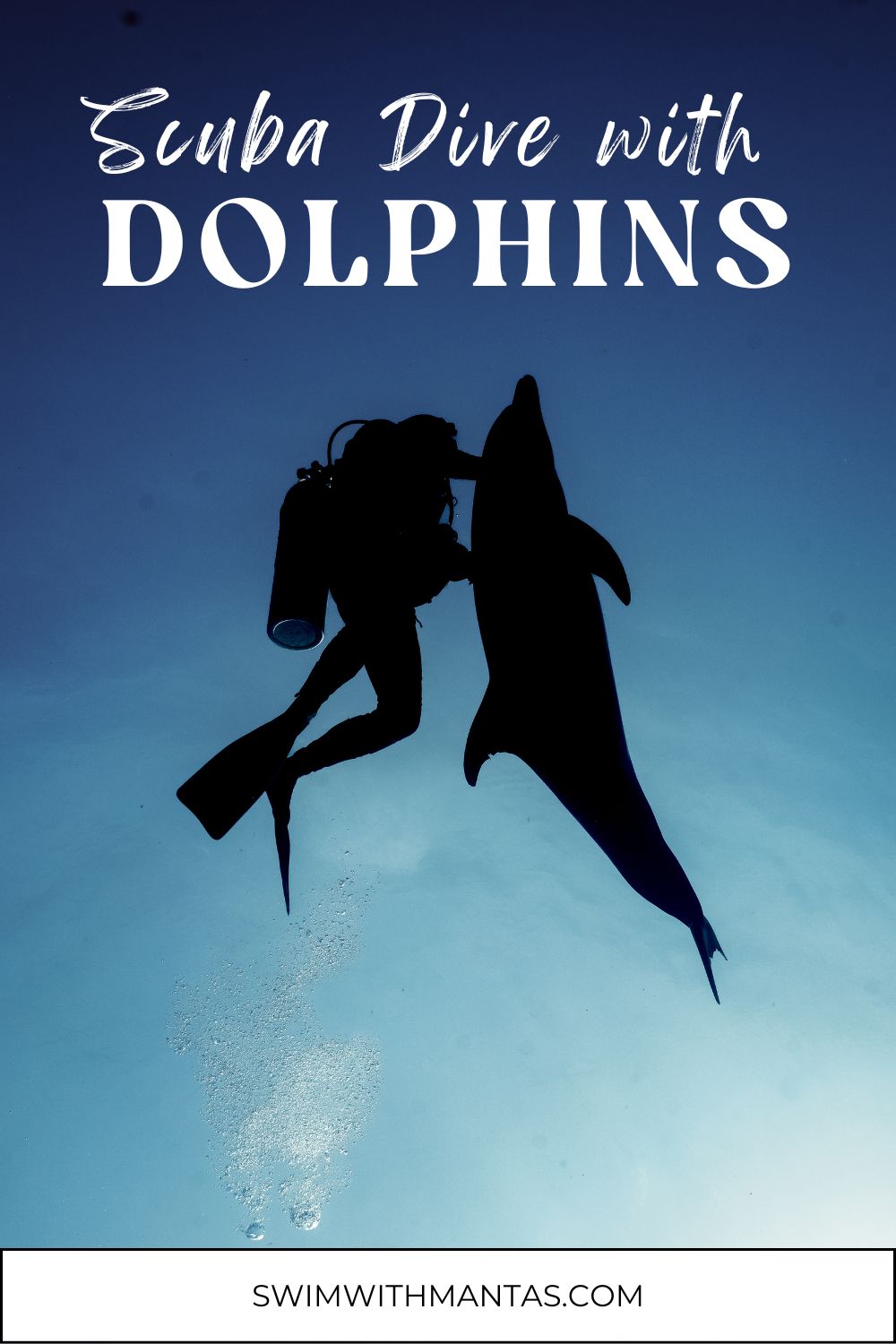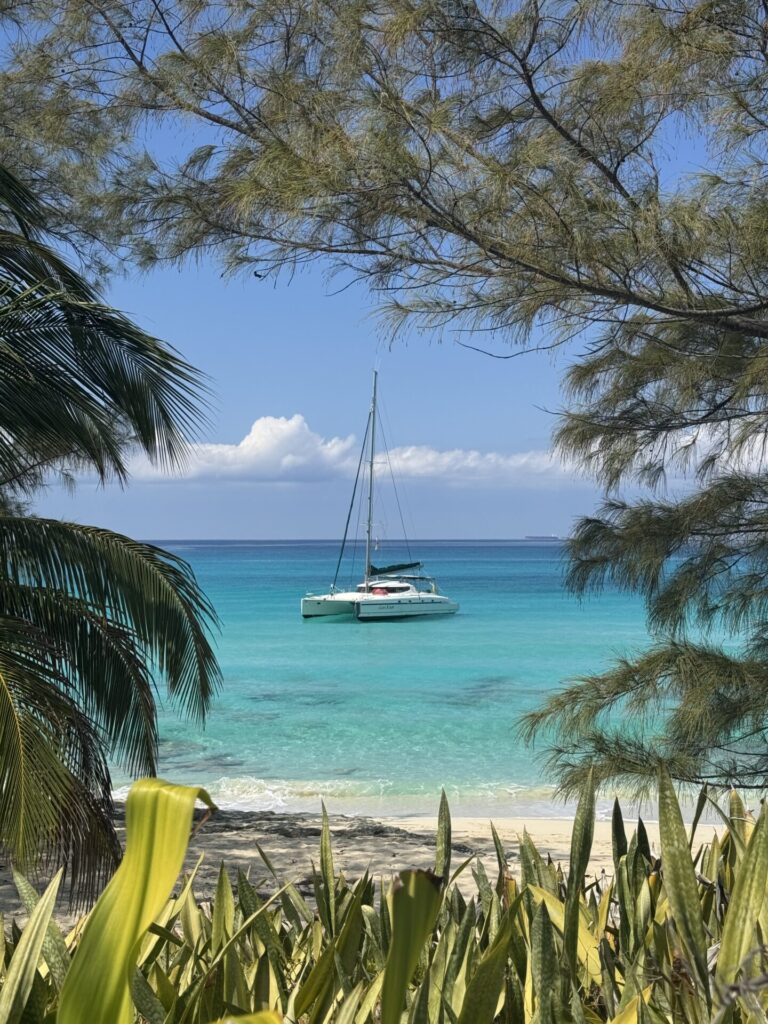Photographing the Bimini Hammerhead Dive
I’ve done the Bimini hammerhead dive over 15 times with the Bimini Scuba Center and have photographed these magnificent animals from just about every angle. Steal my tips! Here are my top strategies for photographing the Bimini hammerhead dive that will help you plan your dive and increase the chances that you will get the hammer shots you’ve been dreaming of.
If you already aren’t familiar with the set-up of the great hammerhead dive, check out this post. There I give you all the information you need to be fully prepared for the Bimini hammerhead dive before you get in the water.
Now that you’re oriented. A couple considerations before you get in the water:
- Number of Dives: How many times are you doing the great hammerhead dive? If you’re able, I think it’s great if you can do the dive a couple of times. If you’re able to do it a few times, then you may choose to focus each dive on a specific kind of shot rather than trying to jam everything into one 2-hour dive. Each dive is also different! Depending on the current, the individual sharks, the feeder, and the day, each dive can feel completely unlike the last one.
- The Beginning of the Dive is Prime Time: The bait is freshest at the beginning of the dive, so usually there’s more intense shark action then. Sometimes the sharks will swim through continuously, sometimes there will be large gaps in time between when the hammerheads are there. You can always take pictures of the nurse sharks!
- Shark IDs: If you do the dive a few times, you will start to ID the sharks based on their size and unique characteristics. Different sharks definitely have different behaviors, and some will be easier to ID and photograph than others. I try to photograph as many individuals on each dive as I can and ID them when I get back on land. I’ve included a shark ID guide with a few of my favorites from the 2024-2025 season below (coming soon!).
- Focus: The hammer on the front of the great hammerheads very unique and it can be hard to predict what exactly your camera will focus on. I try to take as many shots as I can to account for this. The camera also sometimes focuses on sand or bubbles. More times than I can count, I think I’ve captured the perfect shot, but when I get back on land, I find that the wrong part of the shark is in focus or I’ve chopped off a fin. So keep shooting!!!
- Lens: I enjoy bringing my 14mm prime on the Bimini hammerhead dive. I love when the shark swims straight up to me and I can capture the whole thing. With that being said, if a tiger shark shows up, or the bait box is a little farther from the line of divers, then you may not be able to capture the detail in the feeding shots (with the mouth open) with a wide angle lens. If you think you’ll want to take a lot of feeding photos, it might be worth it to bring a zoom lens.
- Settings: I usually shoot on shutter priority with a shutter of (at least) 250. I will occasionally shoot big shark dives on full manual mode, but in the Bahamas it’s usually sunny and bright and I want to be in the moment (and not have my head down adjusting my settings).
Popular Hammer Shots
Here are some popular angles for capturing the great hammerhead and the magic that is the hammerhead dive:
Just the Shark
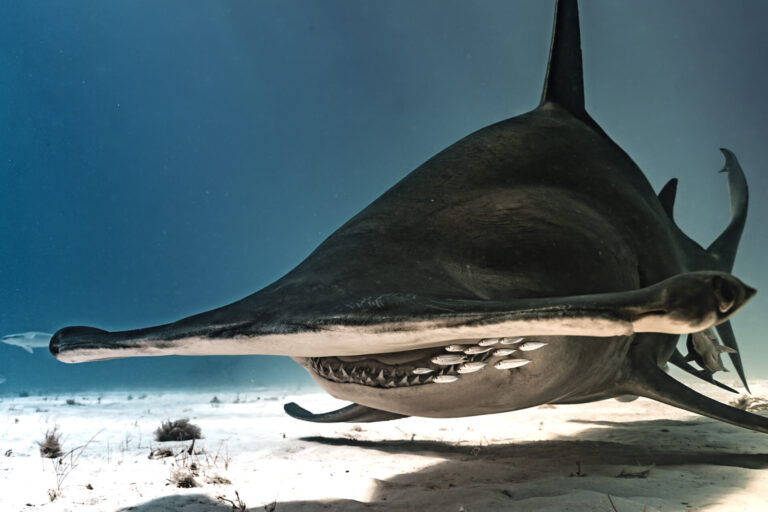
Feeding Shots
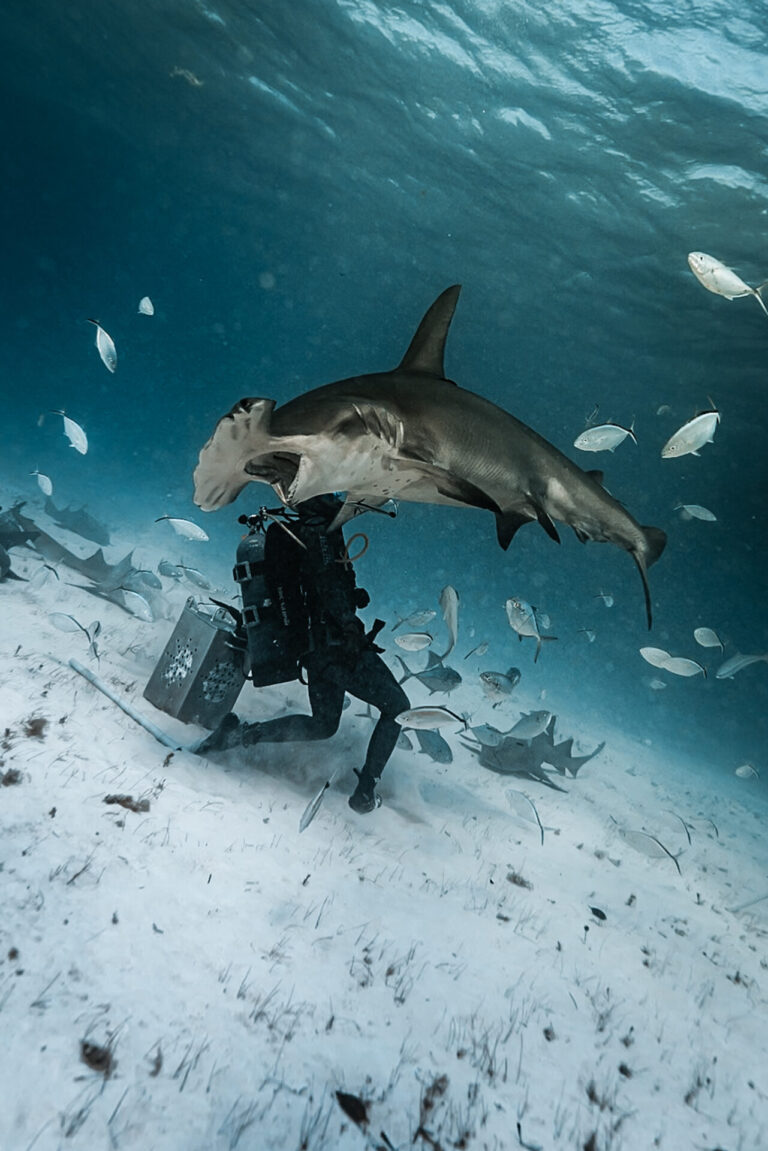
Tail Shots
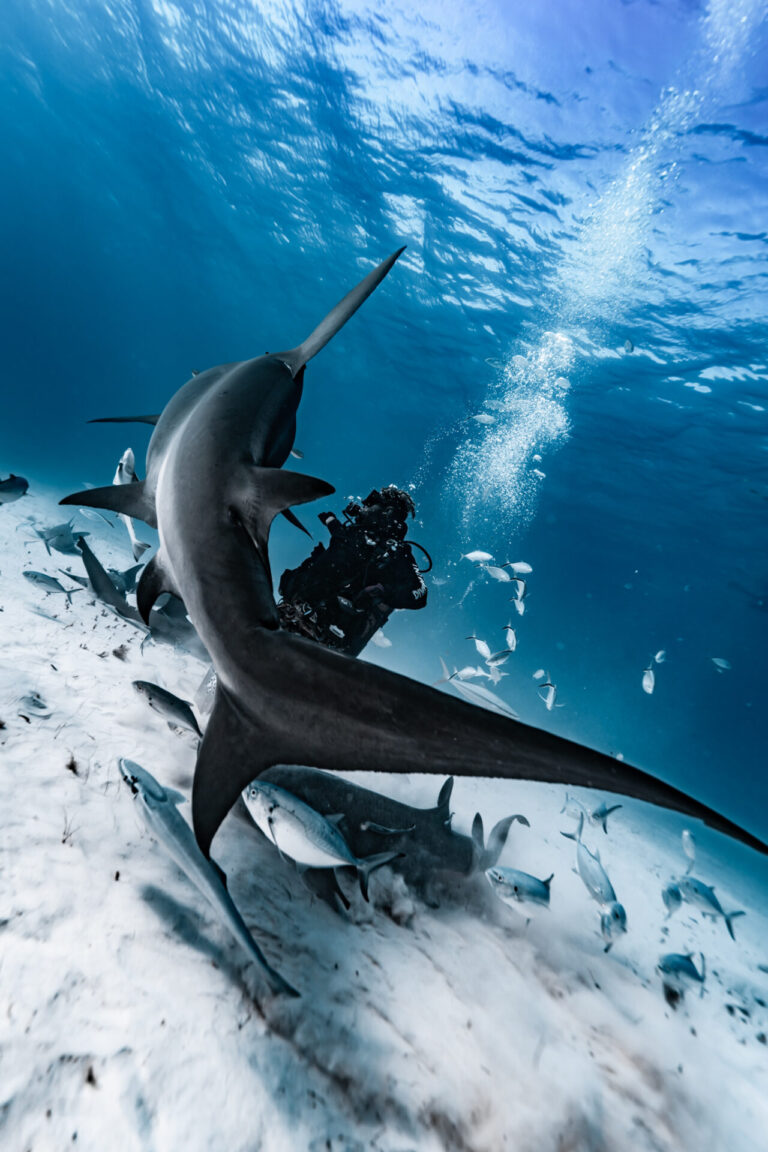
Overhead Shots

Shots from Above
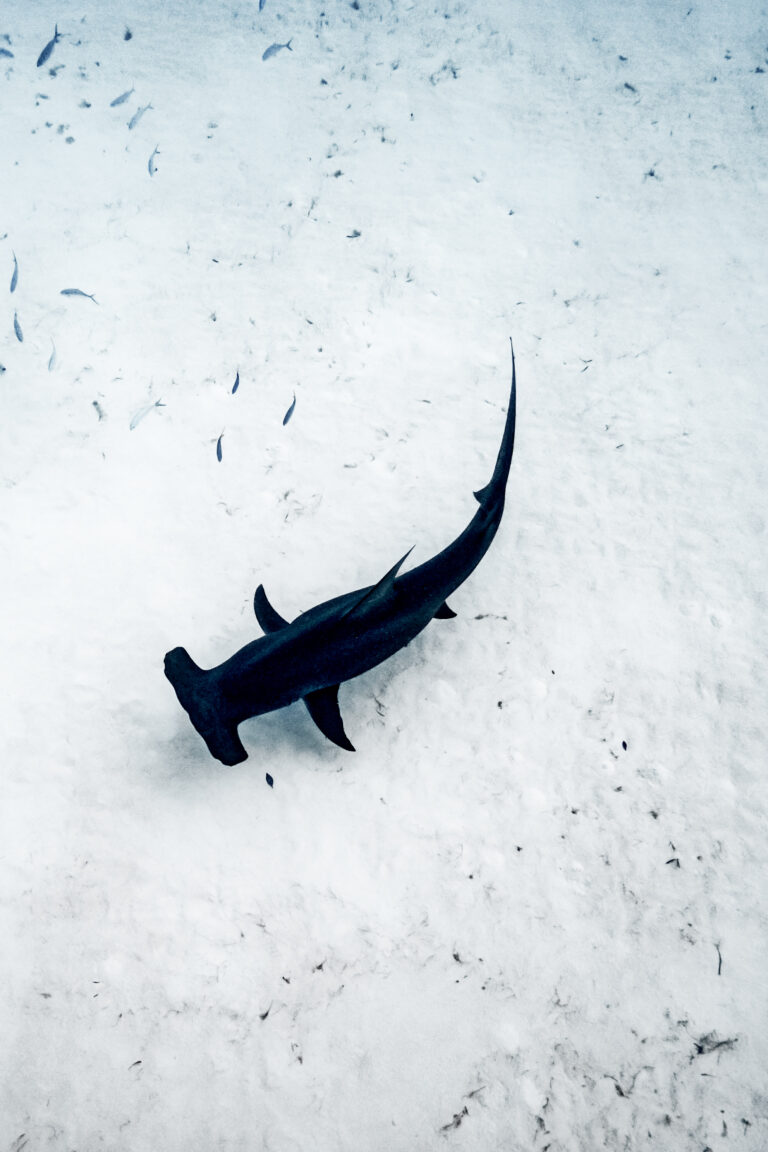
Unique Shots – Sometimes you just get lucky!
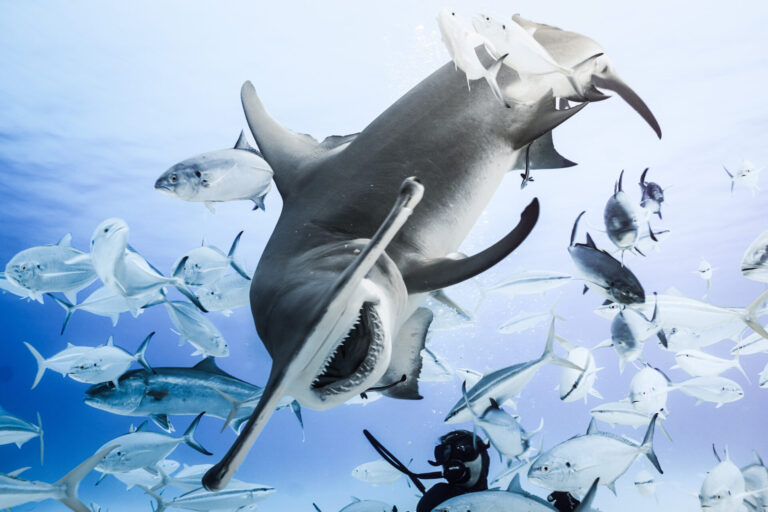
Position on the Hammerhead Dive to Get Certain Shots
On the End: Being on the end of the line will increase the likelihood that you can take photos of the sharks without any divers in them and get more one-on-one moments with the sharks. This is my personal favorite! My breath is literally taken away any time a great hammerhead shark swims right up to me. The only way to guaranty you are on the end is to be the first diver in the water, but it’s possible to change positions while on the dive. If I am on the end, I will usually ask the person next to me if they want to switch after a while (gotta shark the hammer love).
Behind the Feeder: If you are slightly to the left of the feeder (see diagram below), this is usually the best place to take feeder shots. Most (and I stress most) of the time (because every dive is different), the feeders will more often feed with their right hand, and it will pull the shark around from right to left. If you are slightly to the left of the feeder, this will *hopefully* set you up to get open mouth shots.
Look Behind You! (with caution): Generally, you will want to be facing the feeder because the sharks will get their snack and then swim up and over you. But if there isn’t a shark coming up to the feeder and you see some circle back around, take a peak behind you.
Rolling with the Punches
The hammerheads are wild animals, and no dive is the same. My motto for any ocean activity is ALWAYS – Better lucky than good. Any day I see any shark is a good day. If I don’t end up in the spot that feels like the *best* spot on that particular dive that, I know I will still get some cools shots, and another shark lover may be having the best day of their life. I hope you enjoy the Bimini hammerhead dive as much as I do!

